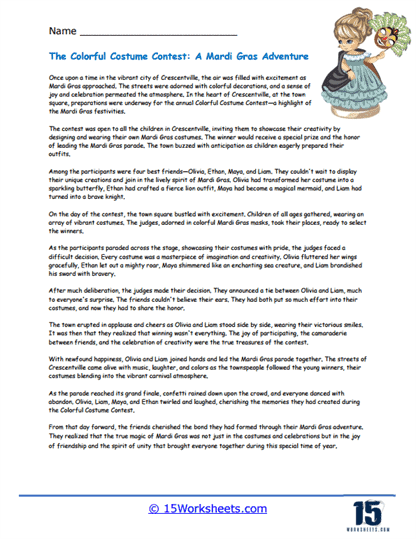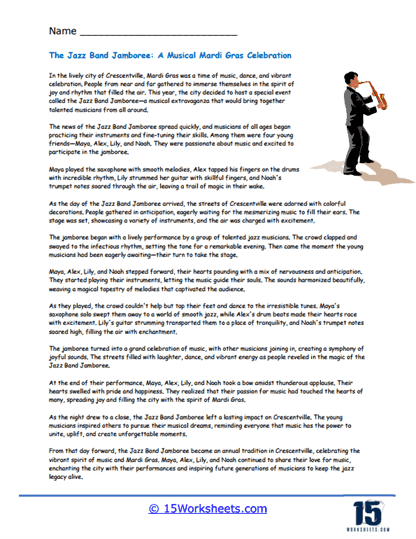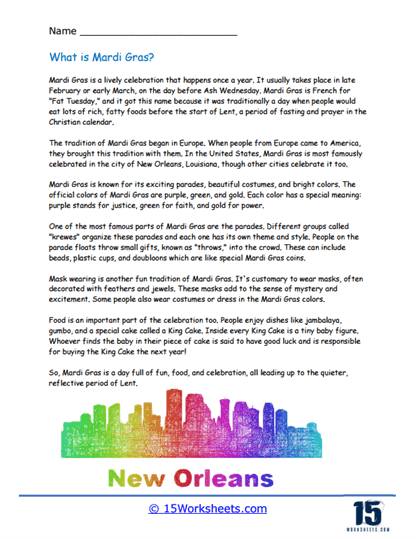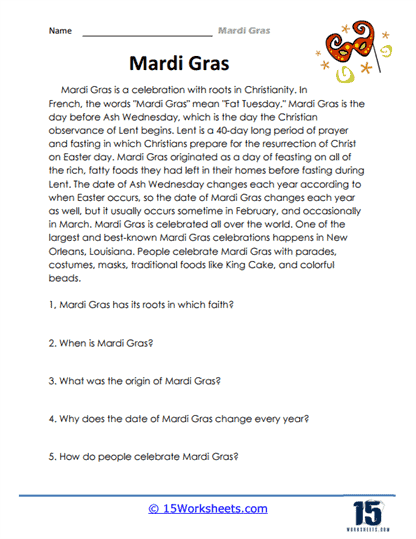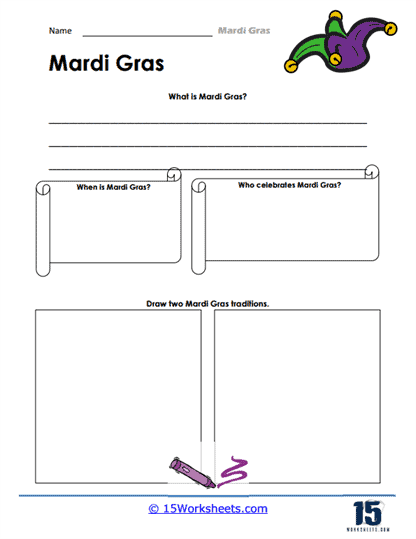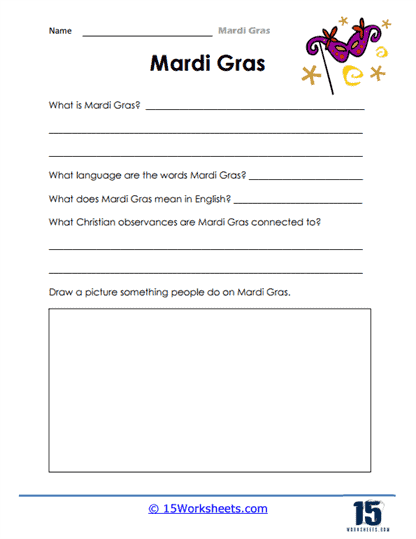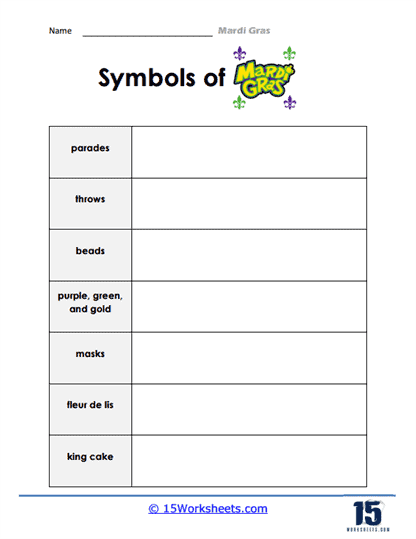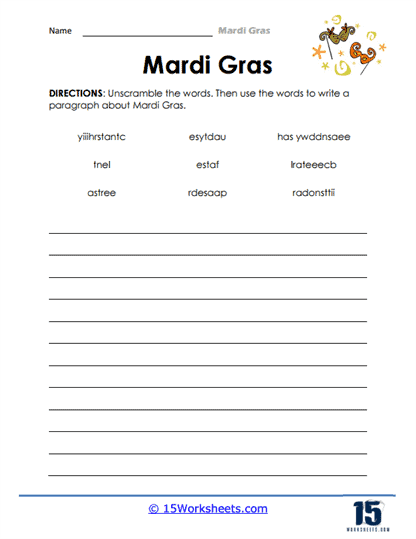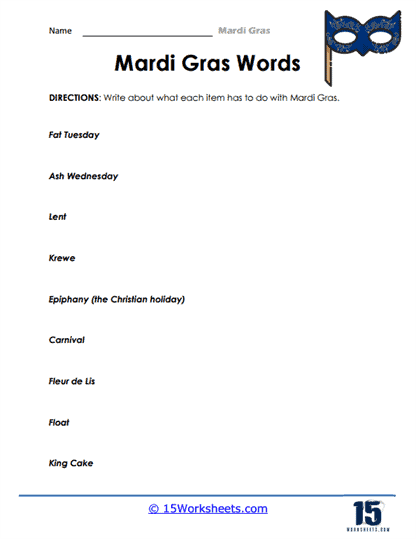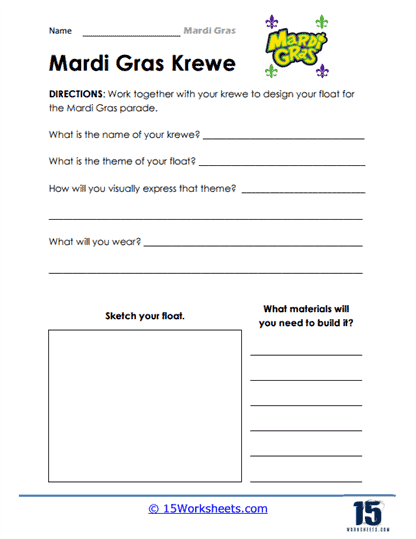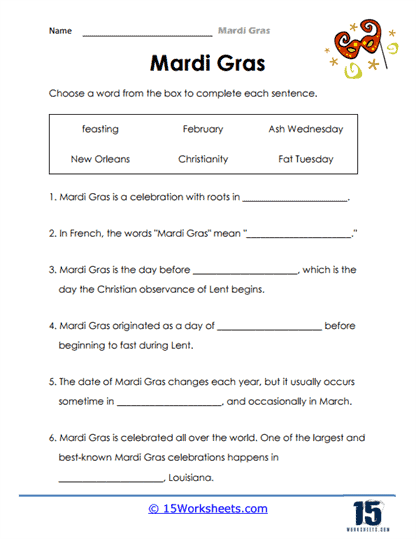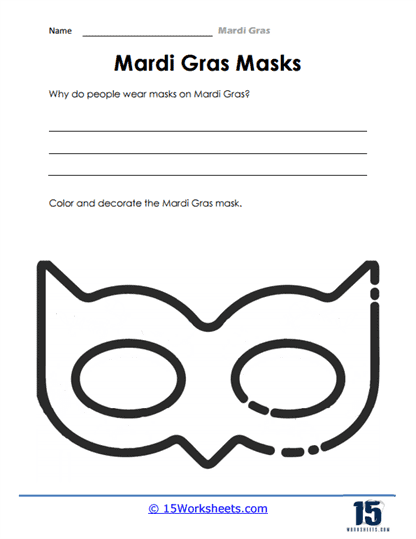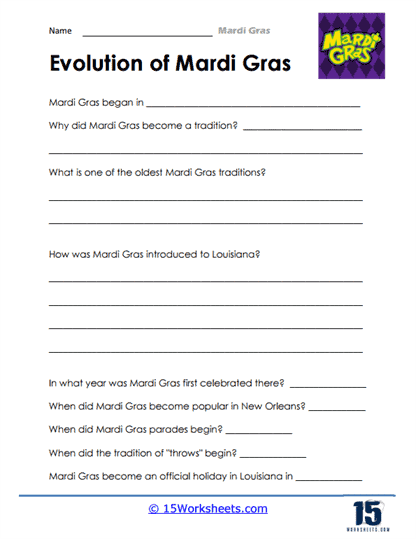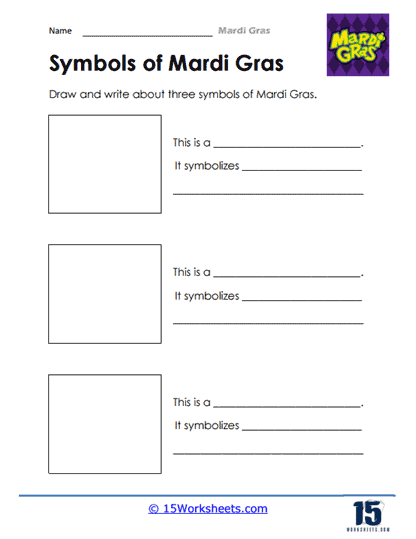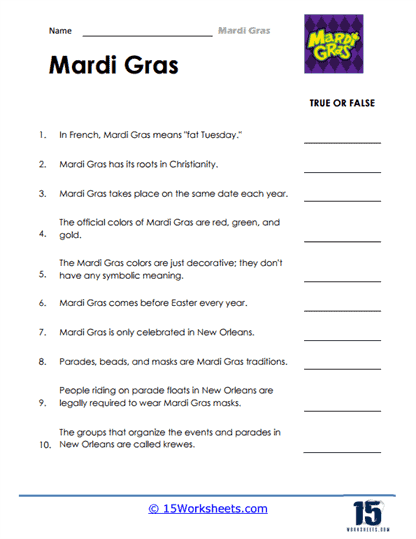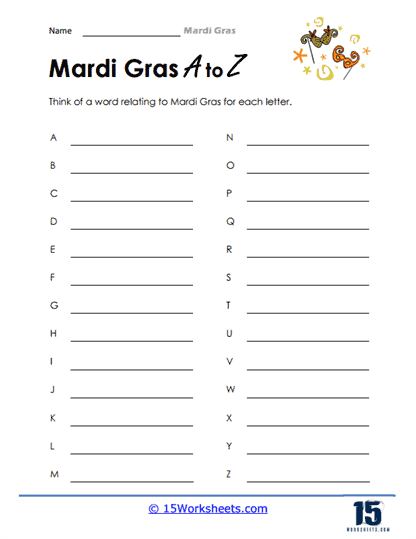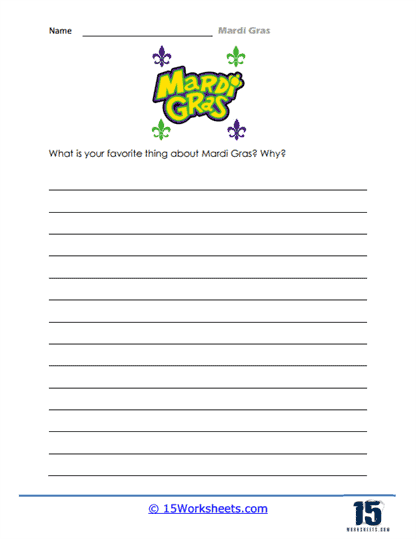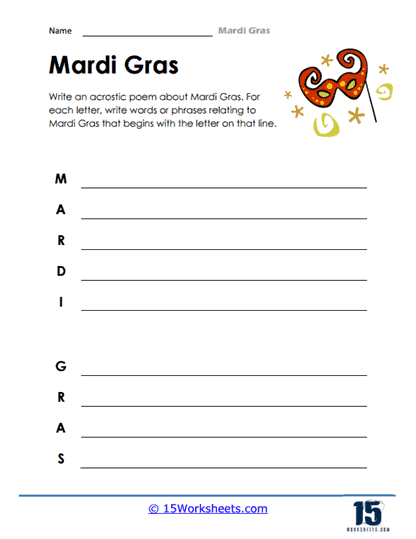Mardi Gras Worksheets
All About These 15 Worksheets
This series of 15 worksheets is an engaging and educational resource designed to immerse students in the vibrant traditions, culture, and history of Mardi Gras. These worksheets provide them with an opportunity to learn about the origins, symbols, and celebrations associated with this festive holiday. By completing a variety of activities, students will deepen their understanding of Mardi Gras while fostering cultural appreciation, creativity, and critical thinking. Through these worksheets, students will:
- Read a passage about the origins of Mardi Gras and demonstrate their knowledge on it by answering writing prompts and filling out an infographic;
- Explain the symbols associated with Mardi Gras;
- Enrich their vocabulary skills on terminologies related to Mardi Gras through word exercises like Unscramble Words, Give the Definition, A-Z words, and more;
- Design their own Mardi Gras parade float;
- Understand the significance of masks and design their own;
- Study the evolution of the traditions;
- And reflect on their favorite things about this holiday.
This series provides an immersive and educational resource for students to deepen their understanding and appreciation of this lively and culturally rich holiday. Through activities encompassing historical context, symbols and colors, vocabulary expansion, float design, cultural exploration, and personal reflection, students will foster cultural appreciation, creativity, and critical thinking skills. Overall, these worksheets promote a sense of celebration, inclusivity, and understanding, fostering a memorable and enriching Mardi Gras experience for students.
What is Mardi Gras?
Mardi Gras, also known as Fat Tuesday or Shrove Tuesday, is a festive event that marks the end of the Carnival season and the day before Ash Wednesday, the beginning of the Christian season of Lent. Mardi Gras is celebrated in various countries around the world, with New Orleans in Louisiana, USA, being one of the most famous locations for its elaborate and colorful celebrations.
The term “Mardi Gras” is French for “Fat Tuesday,” which refers to the practice of indulging in rich, fatty foods before the fasting and penance associated with the Lenten season. The Carnival season, which leads up to Mardi Gras, is a period of festivities, parties, and parades, characterized by vibrant colors, music, dancing, and elaborate costumes.
The origins of Mardi Gras can be traced back to medieval Europe, with roots in ancient Roman festivals such as Lupercalia and Saturnalia. The celebration was later incorporated into Christian traditions and eventually spread to the Americas through European colonization.
New Orleans’ Mardi Gras celebrations date back to the early 18th century when French settlers brought the tradition to Louisiana. Over time, the event has evolved and expanded, with various social clubs known as “krewes” organizing parades and events throughout the city. Mardi Gras in New Orleans is known for its distinctive traditions, such as bead-throwing, wearing masks, and the use of the colors purple, green, and gold, which represent justice, faith, and power, respectively.
While Mardi Gras is most famously associated with New Orleans, the celebration is observed in many other cities and countries worldwide, each with its unique customs, events, and festivities.

